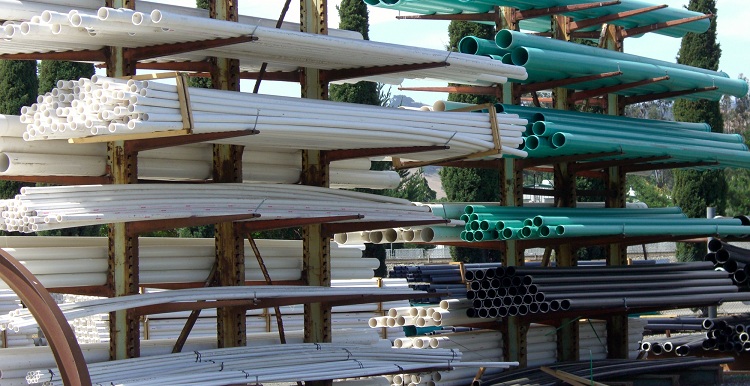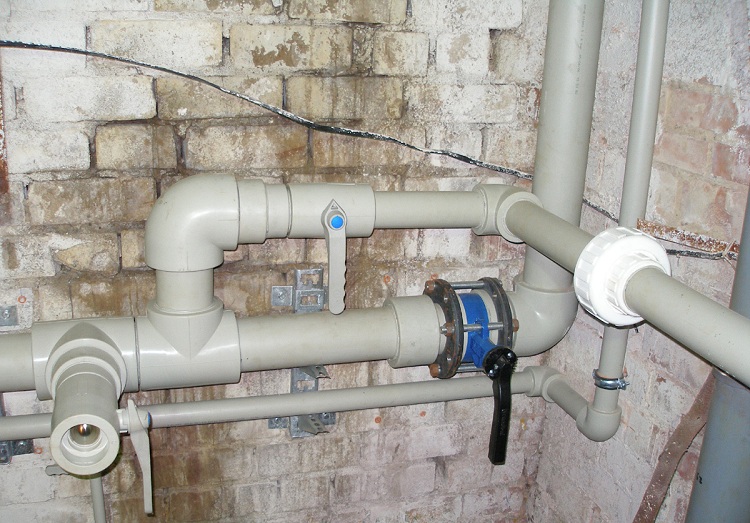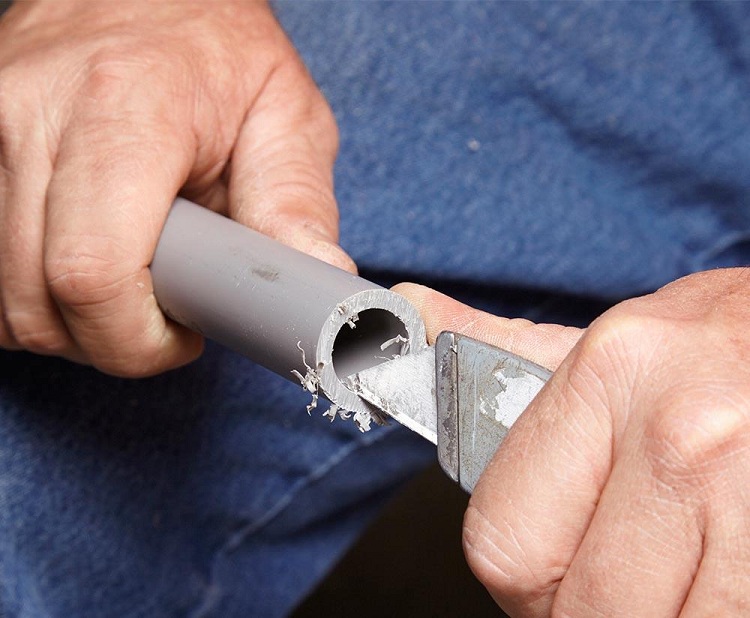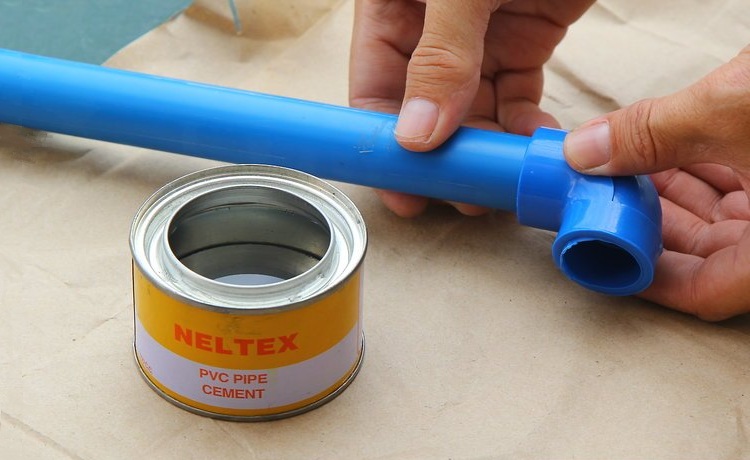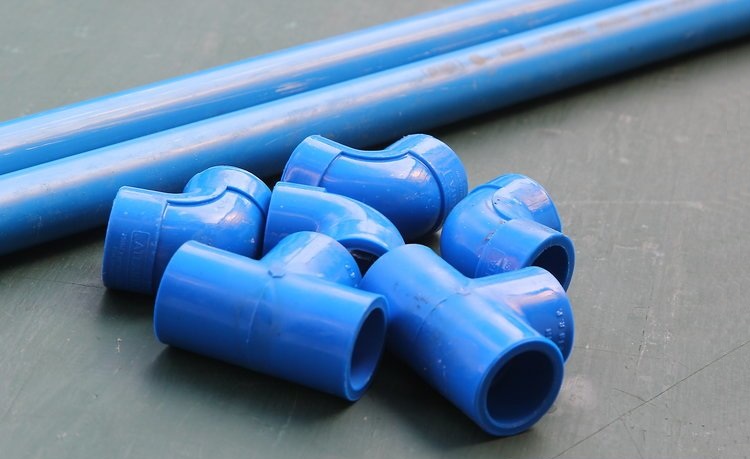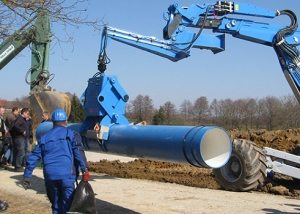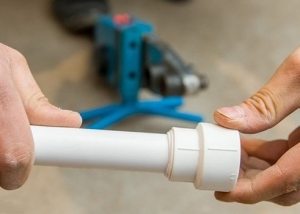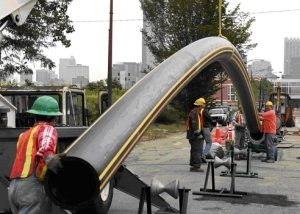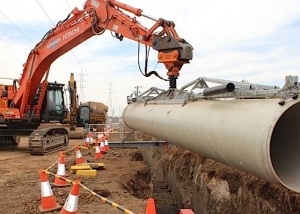PVC pipes and fittings for water supply - the most economical and reliable way to ensure the delivery of clean cold water. Polyvinyl chloride products during the installation of water pipes are rapidly crowding the traditionally used metal and ceramic. Low cost, durability and reliability, ease of installation are complemented by compliance with the high environmental requirements of the most demanding consumers.
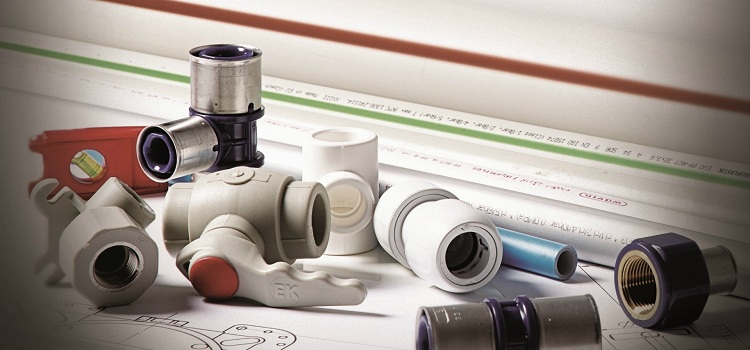
PVC pipes are often used for laying water systems, as they have all the necessary properties and characteristics
Content
PVC pipe classification
Polyvinyl chloride products are made of a complex synthetic thermoplastic polymer, the performance of which is improved by stabilizing additives. Initially, PVC was considered as a material suitable for laying sewers. Over time, it became clear that unplasticized polyvinyl chloride for PVC pipes is characterized by high chemical resistance, which makes it an ideal material when you need to lay a pipeline.
There are several parameters by which PVC pipes are classified. One of them is the dimensions of the product - length, wall thickness, diameter. By the size of the diameter (internal section), the products are divided into:
- small diameter (from 10 to 50 mm);
- medium (50-225 mm)
- large (more than 225 mm).
By the method of moving the working fluid in the system:
- Pressureless. Water (or other working fluid) moves by gravity through them. The internal section of pressureless elements for water supply is from 90 mm to 225 mm. Designed for operation with a working pressure not exceeding 0.16 MPa.
- Pressure The movement of the working medium (gas or liquid) is carried out under pressure. The diameter of water pressure pipes reaches from 32 mm to 500 mm. Operating pressure ranges from 0.63 MPa to 1.6 MPa.
- For rarefied environments.
Pressure and non-pressure products are subdivided in form into:
- Smooth. They are interconnected using adhesives.
- Bell-shaped. They differ in the type of connection used, divided into:
- glue;
- ring sealing;
- threaded.
The division of PVC pipes into groups is used, based on the bending radius:
- Tough.
- Flexible.
- Super flexible.
Another parameter for classification can be the type of product stacking used, according to which they can be:
- external;
- aboveground;
- ground;
- underground;
- internal.
About the advantages and disadvantages of PVC pipes
The list of advantages inherent in polyvinyl chloride products can be divided into two groups:
- Common to all structures made of polymer materials.
- Advantages of PVC in comparison with other polymeric materials.
Common advantages of polymeric materials are that they differ:
- resistance to corrosion and decay;
- high resistance to aggressive chemical environment;
- relatively low cost;
- light weight;
- plasticity and flexibility, which allows you to create the necessary configurations when laying pipeline systems;
- durability;
- simplicity and low cost of installation;
- tightness of connections;
- low coefficient of combustibility;
- a smooth inner surface, due to which a higher throughput is achieved, and also there are no conditions for overgrowing and clogging, scale formation, growths, deposits;
- explosion safety;
- non-toxic, compliance with stringent environmental standards;
- poor susceptibility to the formation and reproduction of bacteria and fungi.
Note! High tightness of the joints of such pipes allows the use of polymer structures even on moving soil and in earthquake-prone regions.
PVC pipes, in comparison with similar products from other polymeric materials, have such advantages:
- high strength, resistance to water shocks;
- resistance to ultraviolet radiation;
- special resistance to the formation and development of bacteria, which, per square centimeter of the inner surface, forms 9-12 times less than on polyethylene and polypropylene surfaces. This circumstance, like, perhaps, no other, has contributed to the rapid transformation of PVC into the main material when installing water pipes.
Speaking about the disadvantages of PVC, they most likely imply restrictions on the use arising from the typical properties of polymeric materials:
- low heat resistance, excluding the possibility of use in hot water supply and heating systems;
- susceptibility to destructive effects of substances containing chlorine;
- the tendency to expand under thermal influence, fraught with deformation of fittings, bending and sagging structures.
When laying water pipes using fittings for PVC water pipes, you should be aware of the limitations associated with the use of polymeric materials.
How are PVC pipes connected?
When laying a water supply system, different methods of connecting PVC structural elements can be used:
- gluing. It is recognized as the simplest way to connect polymer pipes. Aggressive adhesives dissolve the surface of the joined elements, as a result, the monolithicity and tightness of the new design are achieved. Bonding requires a preliminary compatibility check so that the pipe enters the fitting two-thirds of its length. After preliminary operations and drying of the cleaner (primer), a thin layer of special glue is applied. Two-thirds of the pipe inserted into the fitting is turned a quarter of a turn. This will ensure uniform distribution of the adhesive layer. The parts to be glued are held for half a minute-minute, after which excess glue is removed. The joining of pipes with an internal cross section of more than fifty millimeters requires the use of a special mounting device.
- using couplings. Couplings for PVC pipes are used when joining pipes of medium and large diameter. The coupling is located at the junction of two pipe sections. After preparing and coating with a layer of glue the end of the pipe and the inner surface of the coupling, it is worn alternately at the ends of the pipe;
- flanged;
- into the bell. After checking the alignment and preparing the products for connection, make sure that the o-ring is able to ensure the tightness of the joints, that it does not have any deflection or bulges.
Pay attentionnie! Before connecting with silicone, the o-ring and the smooth end of the pipe are lubricated.
- using welding. It is recognized as the most reliable of all docking methods. Therefore, it is used in cases where subsequent access will be difficult, for example, with underground laying.
The use of any of the docking methods requires preliminary operations:
- selection of the desired length (and diameter) of the segments for connection;
- chamfering;
- stripping and degreasing.
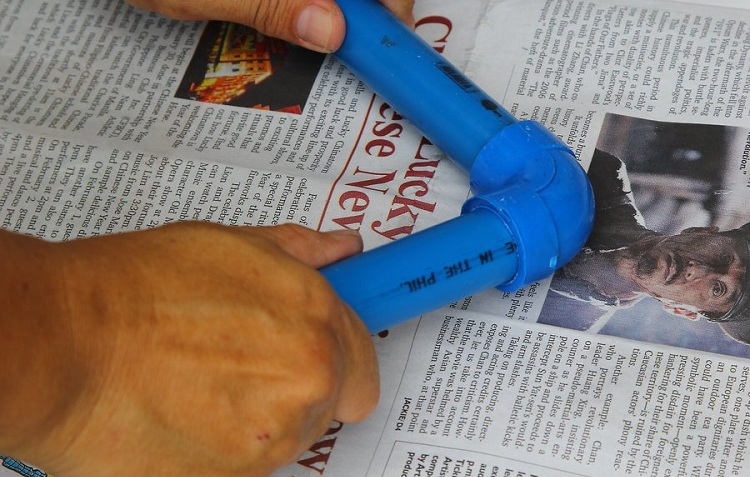
When gluing pipes with fittings, it is important to ensure complete immobility of the connection for a while
Recommendations for choosing PVC pipes for water supply
When choosing elements for installation, you should have a clear idea of what their purpose will be. For example, the arrangement of the well will require the use of pressureless casing with a threaded connection and an internal cross section of 90-225 mm. Laying an external water supply - smooth smooth pressure pipes with an internal section of 90-500 mm, designed for adhesive bonding. When installing internal water supply systems, pressure products are used that are connected to the socket using a seal. In no case should you use PVC products if the water temperature reaches sixty degrees.
Having decided on the type of products for laying the water supply, it is worth making sure that there is a certificate and manufacturer's guarantees. It will not be superfluous to conduct a surface inspection, since external damage will affect the strength of the structure. During storage and transportation of the product must be properly placed. This avoids deformation and caking, which subsequently complicates the installation.
Important! A prerequisite is the availability of all components, fittings and couplings are selected from the same manufacturer in order to avoid possible problems with assembly.
Fittings for PVC water supply
For the correct selection of connecting elements, the water supply plan is carefully studied, which allows you to calculate:
- dead ends
- places of connections and contours.
Fittings are connected using:
- soldering;
- internal and external threads (most of them have both).
For water supply from PVC pipes, the use of such fittings is possible:
- "American". Collapsible tight "American" is installed, as usual, at the transitions to difficult areas or when connecting plumbing. Sometimes, during repairs, a valve is placed in front of it. Then, any work is carried out on an isolated site;
- valves - adapters, straight and angled;
- stubs. Installed to limit dead ends or to connect to another fitting. Often used when transporting pipes;
- crosses. Provide a connection of the perpendicular parts of the pipeline system, including those having different diameters and different materials of execution. Therefore, it is important to consider these points when choosing crosses equipped with threaded or soldered holes, or combined;
- couplings. The simplest fitting. Couplings of various types can be used for joining by soldering pipes of the same diameter; constructions made of different materials using both soldering and threaded joints; as transitions for connecting pipelines of different diameters with different types of connections; in hard-to-reach places and in particularly difficult areas to achieve special reliability and tightness;
- contours. Set at intersections. Allows you to do without installing knees;
- supports. Intend for rigid fastenings.
- tees. Installed on the branches of the pipeline. It can serve as an adapter, equipped with nozzles for different connections. It is important to choose a tee with the desired angle of the central branch - 30º, 45º or 90º;
- corners. The most common form, connected exclusively by soldering. Allows you to make a rotation at an angle from 30º to 90º.
The correct selection of PVC pipes and fittings will ensure trouble-free operation of the water supply system for decades.
